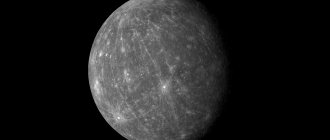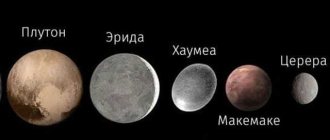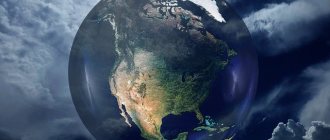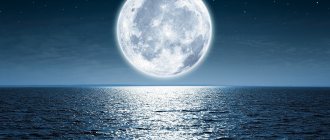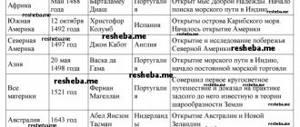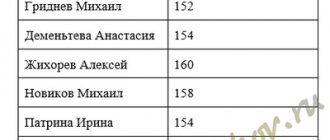Planets are giants Astronomy - 11th grade. The planets are giants Jupiter Saturn Uranus Neptune. - presentation
Planets are giants Astronomy - 11th grade
Giant planets Jupiter Saturn Uranus Neptune
Jupiter Jupiter is the fifth planet from the sun and the largest planet in the solar system. Jupiter is more than twice as massive as all the other planets combined. Jupiter is approximately 90% hydrogen and 10% helium with traces of methane, water, and ammonia. Jupiter may have a core of solid material that is about 10 to 15 times the mass of Earth. Above the core is the bulk of the planet in the form of liquid metallic hydrogen. The layer farthest from the core consists primarily of ordinary molecular hydrogen and helium. The Great Red Spot was noticed by observers on Earth more than 300 years ago. It measures kilometers in size. Jupiter's Great Red Spot emits more energy into space than it receives from the sun. Inside Jupiter is a hot core whose temperature is approximately K. Jupiter has a huge magnetic field, much stronger than that of the earth. Jupiter has rings like Saturn, but much fainter. Jupiter has 16 known satellites: 4 large and 12 small.
Great Red Spot The Great Red Spot is an oval formation of variable size located in the southern tropical zone. Currently, it has dimensions of 15x30 thousand km, and a hundred years ago observers noted its dimensions to be 2 times larger. Sometimes it is not very clearly visible. The Great Red Spot is a long-lived free vortex (anticyclone) in the atmosphere of Jupiter, making a full revolution in 6 Earth days and, like the bright zones, is characterized by upward currents in the atmosphere. The clouds in it are located higher, and their temperature is lower than in neighboring areas of the belts.
Moons of Jupiter NameRadius, kmNameRadius, km Metis20Callisto1883 Adrastea10Leda8 Amalthea181Himalia93 Teba222Lysistea18 Io422Ilara38 Europa617Ananke15 Ganymede2631Carme20 Pasiphae25Sinope18
IO Io is the third largest and closest satellite of Jupiter. Io was discovered by Galileo and Marius in 1610. Io and Europa are similar in composition to the terrestrial planets, primarily due to the presence of silicate rocks. Very few craters have been found on Io, which means its surface is very young. Instead of craters, hundreds of volcanoes were discovered. Some of them are active! The landscapes of Io are surprisingly diverse: pits up to several kilometers deep, lakes of molten sulfur, mountains that are not volcanoes, streams of some kind of viscous liquid stretching for hundreds of kilometers, and volcanic vents. Io, like the moon, always faces the same side towards Jupiter. Io has a very thin atmosphere, consisting of sulfur dioxide and possibly some other gases.
Europa Europa is the fourth largest moon of Jupiter. Europa was discovered by Galileo and Marius in 1610. Europa and Io are similar in composition to the terrestrial planets: they are also primarily composed of silicate rock. Unlike Io, Europa is covered on top with a thin layer of ice. Recent data from Galileo indicate that Europa's interior is composed of layers with a small metallic core at the center. Images of Europa's surface closely resemble images of sea ice on Earth. It is possible that beneath the surface of Europa's ice there is a level of liquid water as deep as 50 km. Recent observations indicate that Europa has very little oxygen atmosphere. Galileo detected the presence of a weak magnetic field (possibly 4 times weaker than that of Ganymede).
Ganymede Ganymede is the seventh and largest moon of Jupiter. Ganymede was discovered by Galileo and Marius in 1610. Ganymede is the largest moon in the solar system. Ganymede is divided into three structural levels: a small core of molten iron or iron and sulfur, surrounded by a rocky silicate mantle with an icy shell on the surface. The surface of Ganymede consists mainly of two types of terrain: very old, heavily cratered, dark areas, and somewhat younger, lighter areas with extensive rows of ditches and mountain ridges. Ganymede's thin atmosphere contains oxygen like Europa. This satellite has its own magnetospheric field, extending into the interior of the huge Jupiter.
Callisto Callisto is the eighth known moon of Jupiter and the second largest Callisto was discovered by Galileo and Marius in 1610. Callisto is primarily composed of approximately 40% ice and 60% rock/iron, similar to Titan and Triton. The surface of Callisto is completely covered with craters. Its age is estimated at 4 billion years. Callisto has very little atmosphere consisting of carbon dioxide.
Saturn Saturn is the sixth planet from the Sun and the second largest planet in the solar system. Saturn is clearly oblate; its equatorial and polar diameters differ by almost 10%. This is the result of its rapid rotation and liquid state. Saturn has the lowest density of all the planets, its specific gravity being only less than that of water. Like Jupiter, Saturn is composed of approximately 75% hydrogen and 25% helium, with traces of water, methane, ammonia and rock. Saturn's rings are unusually thin: although they are 250,000 km or more in diameter, they are 1.5 km thick. They consist mainly of ice and rock particles covered with an ice crust. The Rings of Saturn Like other planets of the Jupiter group, Saturn has a significant magnetic field. Saturn has 18 moons.
Rings of Saturn. There are three main rings, named A, B and C. They are visible without much difficulty from Earth. There are also names for weaker rings - D, E, F. Upon closer examination, there are a great many rings. There are gaps between the rings where there are no particles. The one of the gaps that can be seen with an average telescope from Earth (between rings A and B) is called the Cassini gap.
Saturn's moons NameRadius or dimensions. km NameRadius or dimensions. km Pan?Enceladus250 Atlas20x15Tethys525 Prometheus70x40Telesto12(?) Pandora55x35Calypso5x10 Epimetheus70x50Dione560 Janus110x80Helen18x15 Mimas195Rhea765 Titan2575Hyperion720 Iapetus175x100Phoebe110
Mimas Mimas was discovered in 1789 by Herschel. Mimas is unusual in that one huge crater was discovered on it, which is the size of a third of the satellite. It is covered with cracks, which is probably caused by the tidal influence of Saturn: Mimas is the closest of the large moons to the planet. In the photo you can see the same huge meteorite crater, called Herschel. Its size is kilometers. Herschel is 10 kilometers deep into the surface, with a central hill almost as high as Everest.
Enceladus Enceladus was discovered in 1789 by Herschel. Enceladus has the most active surface of all the moons in the system. It shows traces of flows that destroyed the previous topography, so it is assumed that the bowels of this satellite may still be active. Additionally, although craters can be seen everywhere there, the paucity of them in some areas implies that these areas are only a few hundred million years old. This would mean that parts of the surface on Enceladus are still subject to change. It is believed that its activity lies in the influence of the tidal forces of Saturn, heating Enceladus
Tethys Tethys was discovered in 1684 by J. Cassini. Tethys is famous for its huge crack-fault, 2000 km long - three quarters of the length of the satellite's equator! Photos of Tethys returned by Voyager 2 showed a large, smooth crater about a third the diameter of the moon itself, called Odysseus. He's bigger than Herschel on Mimas. Unfortunately, in the presented image these details are poorly distinguishable. There are several hypotheses about the origin of the crevice, including one suggesting a period in the history of Tethys when it was liquid. When frozen, a crevice could form. The surface temperature of Tethys is 86 K.
Dione Dione was discovered in 1684 by J. Cassini. On the surface of Dione, traces of the release of light material in the form of frost, many craters and a winding valley are visible.
Rhea Rhea was discovered in 1672 by J. Cassini. Rhea - has an old, completely strewn with craters, surface
Titan Titan was discovered by Huygens in 1655. Titan is approximately half frozen water and half rocky material. It is possible that its structure is differentiated into separate levels, with a rocky central area surrounded by separate levels consisting of different crystalline forms of ice. It may still be hot inside. Titan is the only moon of the solar system that has a significant atmosphere. The pressure on its surface is more than 1.5 bar (50% higher than on Earth). The atmosphere consists primarily of molecular nitrogen (as on Earth) with argon making up no more than 6%, and a few percent methane. Traces of at least a dozen other organic substances (ethane, hydrogen cyanide, carbon dioxide) and water were also found.
Hyperion Hyperion was discovered in 1848 by Lascelles. The irregular shape of the satellite causes an unusual phenomenon: Every time the giant Titan and Hyperion approach each other, Titan changes Hyperion's orientation through gravitational forces. The irregular shape of Hyperion and traces of long-ago bombardment by meteorites make it possible to call Hyperion the oldest in the Saturn system
Iapetus Iapetus was discovered in 1671 by J. Cassini. Iapetus' orbit is located almost 4 million kilometers from Saturn. One side of Iapetus is heavily cratered, while the other side is almost smooth. Iapetus is known for its heterogeneous surface brightness. The satellite, like the Moon and the Earth, is always turned with one side towards Saturn, so that in its orbit it moves only with one side forward, which is 10 times darker than the opposite side. There is a version that in its movement the satellite “sweeps up” dust and small particles that also orbit Saturn. On the other hand, perhaps this dark matter is generated by the bowels of the satellite.
Phoebe Phoebe rotates around the planet in the direction opposite to the direction of rotation of all other satellites and Saturn around its axis. It is roughly spherical in shape and reflects about 6 percent of sunlight. Besides Hyperion, this is the only satellite that does not always face Saturn with one side. All these features very reasonably allow us to say that Phoebe is an asteroid captured in gravitational networks.
Uranus Uranus is the first planet discovered in modern times by William Herschel during his systematic survey of the sky with a telescope on March 13, 1781. The axis of rotation of most planets is almost perpendicular to the plane of the ecliptic, and the axis of Uranus is almost parallel to the ecliptic. Uranium consists primarily of rock and various ices. Apparently, Uranus does not have a rocky core like Jupiter and Saturn. The atmosphere of Uranus consists of 83% hydrogen, 15% helium and 2% methane. Like other gas planets, Uranus has rings. Like Jupiter, they are very dark and, like Saturn, in addition to fine dust, they include quite large particles up to 10 meters in diameter. There are 11 known rings. Uranus has 15 known and named moons and 5 recently discovered ones.
Satellites NameRadius. kmNameRadius. km Ophelia16Rosalinda27 Bianca22Belinda34 Cressidia33Pac77 Desdemona29Miranda236 Juliet42Ariel191 Portia55Umbriel585 Titania789Oberon761 Caliban60(?)Sycorax120(?)
Miranda was discovered in 1948 by Kuiper. Miranda's surface is a mixed bag: cratered terrain interspersed with areas with uncanny grooves, valleys interspersed with cliffs more than 5 kilometers high. Miranda's small size and low temperature (-187 Celsius) and, at the same time, the intensity and diversity of tectonic activity on this satellite surprised scientists. It is likely that tidal forces from Uranus, constantly striving to deform the satellite, served as an additional source of energy for such activity.
Ariel was discovered in 1851 by Lascelles. Ariel's surface is a mixture of cratered terrain and interconnected valley systems hundreds of kilometers long and more than 10 kilometers deep. Ariel has the brightest and perhaps geologically youngest surface in the Uranus satellite system.
Umbriel Was discovered in 1851 by Lassell. Umbriel's surface is ancient and dark, having apparently been subject to few geological processes. The dark tones of Umbriel's surface may be the result of dust and small debris that was once in the vicinity of the moon's orbit.
Titania Titania was discovered by Herschel in 1787. Titania is distinguished by huge systems of cracks and canyons, indicating some period of active geological activity in the past of this satellite. These features may be the result of tectonic movements of the crust.
Oberon Oberon was discovered by Herschel in 1787. Oberon, the outermost of the five large moons, also has an old, cratered surface, with faint traces of internal activity. Uranus' two moons, Oberon and Umbriel, appear exactly the same, although Oberon is 35% larger. All of the large moons of Uranus are a mixture consisting of approximately 40-50% frozen water, and the rest is rock. Covered with a large number of craters, Oberon's surface was likely stable from the beginning of its formation. Much larger craters were found here than on Ariel and Titania. Some of the craters have ejecta rays similar to those found on Callisto.
Neptune After Uranus was discovered, it was noted that its orbit did not agree with Newton's laws. Thus, the existence of another more distant planet was predicted, which should have influenced the orbit of Uranus. Neptune's composition is similar to Uranus: various "ices" and rock with a small amount of helium and about 15% hydrogen. Its atmosphere is mostly hydrogen and helium with a small amount of methane. Like any gas planet, winds blow at very high speeds on Neptune. Neptune's winds are the fastest in the solar system, reaching speeds of 2000 km/h. Like Jupiter and Saturn, Neptune has an internal source of heat - it emits twice as much energy as it receives from the Sun.
Satellites Based on ground-based studies, only two satellites of Neptune were known: Triton and Nereid, orbiting Neptune in the opposite direction. TritonNereid Voyager 2 discovered 6 more satellites ranging in size from 200 to 50 km, rotating in the same direction as Neptune.
Triton Triton was discovered by Lascelles in 1846. Triton's spin axis is unusual, tilted 157 degrees to Neptune's. Triton's density is 2.0. Triton is probably only about 25% frozen water, the rest being rock material. The surface temperature of Triton is only 34.5 K (-235 C). Triton has an atmosphere, although it is very slight, consisting mainly of nitrogen with a small amount of methane. Thin fog extends upward for 5-10 km. The most interesting and completely unexpected feature of this unusual world are the ice volcanoes, which may contain liquid nitrogen, dust and materials containing methane.
Nereid Nereid is the third largest and most distant satellite of Neptune. This celestial body has the most highly eccentric orbit of all the planets and satellites of the solar system. Its distance from Neptune varies from km to km.
Pluto Pluto is the furthest planet from the Sun and the smallest planet. Pluto is smaller than the seven satellites of the solar system planets: the Moon, Io, Europa, Ganymede, Callisto, Titan and Triton. Pluto was discovered in 1930. Pluto's orbit is highly elongated. From time to time it is located closer to the Sun than Neptune. Pluto rotates in the opposite direction to most other planets. Like Uranus, Pluto's equatorial plane is located almost at right angles to the plane of its orbit. Pluto's surface temperature is unknown, but is thought to be between -228 and -238 C. Pluto's composition is unknown, but its density (approximately 2 g/cm3) indicates that it may be composed of 70% rock mixtures. rocks and stone and 30% from frozen water. Little is known about Pluto's atmosphere: it probably consists mainly of nitrogen with carbon monoxide and methane.
Charon In 1978, Pluto's satellite, Charon, was discovered, located at a distance of km from the planet. Charon orbits Pluto every 6.4 days (Pluto's rotation period), which is unlike any other moon. Every five years there is a mutual eclipse between Pluto and Charon. The updated diameters of Pluto are km, and Charon is km. Pluto and Charon have significantly different colors. Charon's surface is 30% darker than Pluto. It is believed that Charon, unlike Pluto, is covered with water ice.
